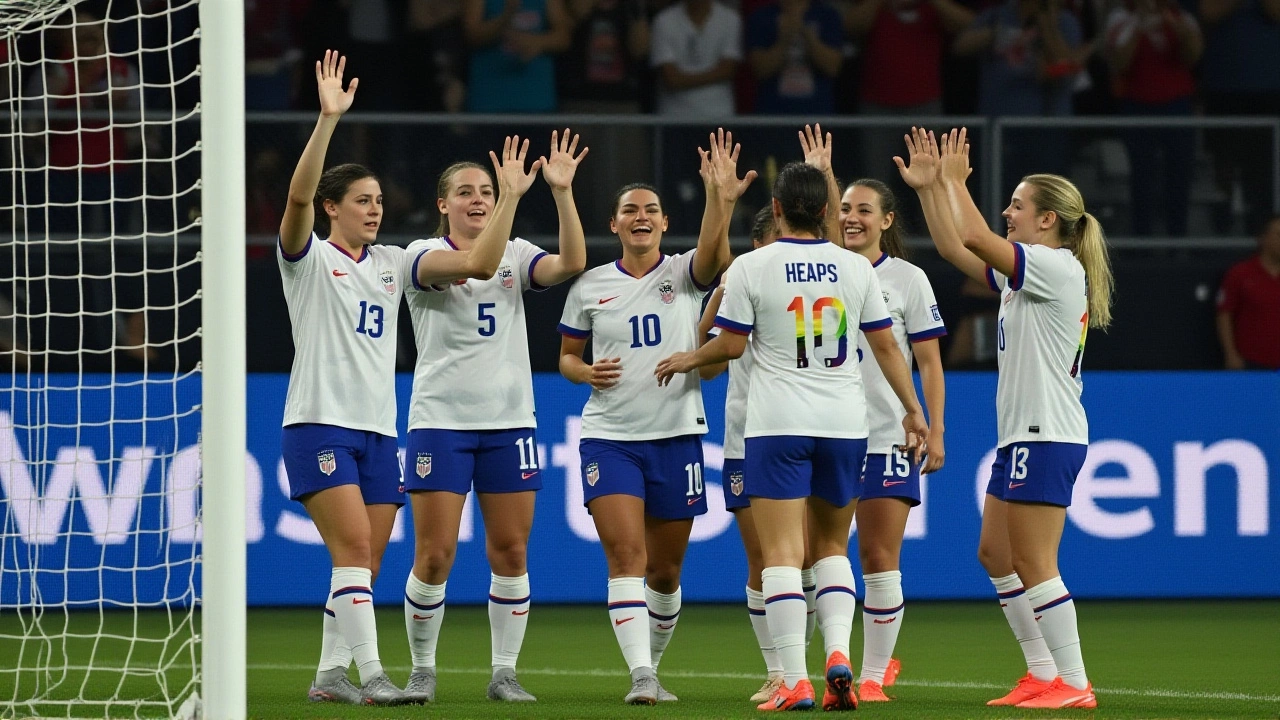On Sunday, November 16, 2025, the Mexico national football team and the Uruguay national football team played to a frustrating 0-0 draw in an international friendly — a match that ended not with a goal, but with a heated debate over a denied penalty, fan hostility, and a biting remark from one of Mexico’s most recognizable stars. The game, played at an undisclosed venue in the United States, drew sharp criticism from fans and pundits alike, not for the quality of play, but for the tension that simmered just beneath the surface.
The Match That Wasn’t About Goals
Neither side managed to break the deadlock despite multiple clear chances. Mexico, under head coach Diego Cocca, showed improved defensive discipline, particularly under pressure. Fox Deportes analysts noted, "RECOVER FOR RESPECT BECAUSE OF THE PRESSURE THAT THEY APPLY IN EXERCISING THE BALL. THIS SOMETHING THAT I WILL HIGHLIGHT FROM THIS MEXICAN SIDE." But the final third remained barren. Raúl Jiménez, the 34-year-old Wolverhampton Wanderers striker, was isolated for much of the match, often double-marked by Uruguay’s disciplined backline. His lone shot on target was saved by Sergio Rochet, Uruguay’s goalkeeper, in the 68th minute.Uruguay, meanwhile, leaned on counterattacks. Substitute Facundo Torres, who came on at halftime for Juan Manuel Sanabria, created the best opportunity in the 47th minute with a curling free kick that forced a diving save from Guillermo Ochoa. The game’s rhythm was slow, deliberate — more tactical chess than fireworks.
The Penalty That Wasn’t (Or Was It?)
The controversy erupted in the 89th minute. Mexican midfielder Erick Sánchez went down inside the box after minimal contact from Uruguay’s José María Giménez. The crowd roared. The Mexican bench leapt to their feet. The referee, however, waved play on.Commentators were split. Mariano, the Fox Deportes analyst, didn’t hesitate: "IT IS A SLIGHT CONTACT. IT IS CLEAR. THERE’S CONTACT INSIDE OF THE BOX." Meanwhile, Keith, another voice on the broadcast, countered: "AND A CHANCE COMING THE OTHER WAY AND GOES DOWN! HE LOOKED LIKE IT MIGHT HAVE BEEN A CONTACT. NO PENALTY FOR NOW." An unidentified official in the booth added, "RERACK CARD. IT WAS A LITTLE BIT OF CONTACT. ROBERT THAT WAS A PENALTY."
The confusion spilled onto the pitch. Mexico’s Montes confronted the referee, leading to a brief scuffle that required intervention from both teams’ captains. "MONTES, THEY ARE GOING TO HAVE TO BE SEPARATED. THE REFEREE ARE GOING TO HAVE TO COME BACK FOR THIS ONE," Mariano said, adding, "COULD NOT CLEVER, NOT SMART ENOUGH." The moment became the defining image of the match — not a goal, but a moment of injustice felt by half the stadium.
"Maybe That’s Why They Always Take Us to the United States"
The real punchline came after the final whistle. As Mexico’s players walked off, they were met with a chorus of boos — not from Uruguayan fans, but from the home crowd. Many were Mexican-Americans who had come to support their heritage, yet felt let down by the performance. In his post-match interview, Raúl Jiménez didn’t mince words: "Maybe that’s why they always take us to the United States."It was a quiet, devastating comment — one that spoke volumes about Mexico’s long-standing relationship with American venues. For years, the Mexican national team has played a significant portion of its "home" matches in U.S. cities like Los Angeles, Dallas, and Houston, where large Mexican diaspora communities turn out in droves. But the loyalty is often tested when results don’t match expectations. Jiménez’s remark wasn’t just about this match — it was about the emotional burden of performing for fans who are technically "home," but culturally distant.

What This Means for World Cup Prep
Both teams are using this friendly as part of their buildup to the 2026 FIFA World Cup qualifiers. Mexico, under Cocca, is trying to transition from a generation defined by Guardado and Ochoa to a younger core led by Pineda, Rodríguez, and Vargas. Uruguay, meanwhile, is testing its depth as veterans like Giménez and Bentancur begin to pass the torch to players like Torres and Pellistri.The match exposed lingering issues for Mexico: a lack of clinical finishing, over-reliance on individual brilliance, and a disconnect between fan expectations and team performance. For Uruguay, it confirmed their defensive solidity — they’ve conceded just one goal in their last five friendlies — but also highlighted a lack of creativity in the final third without Núñez fully fit.
Meanwhile, the November 2025 international window saw other notable results: the United States Men’s National Team beat Paraguay 2-0 in Chester, Pennsylvania, with Giovanni Reyna scoring on his return. That result, broadcast live on Fox Sports, underscored how the U.S. is becoming a de facto home ground for CONCACAF rivals — and how that dynamic is changing fan dynamics across the region.
What’s Next?
Mexico faces Panama in a World Cup qualifier on November 20, 2025, in Guadalajara — their first home match in over a year. The pressure is on Cocca to deliver a performance that silences the critics. Uruguay, meanwhile, hosts Colombia on November 21, in what will be a crucial test of their attacking evolution.As for the penalty? FIFA has not yet reviewed the incident. But with the video circulating widely on YouTube under the title "WAS A PENALTY OR NOT?" (video ID: _ItunuOCukU), and with Mexican media demanding accountability, it’s likely to be flagged for review — even if it’s too late to change the result.
Frequently Asked Questions
Why does Mexico play so many home games in the United States?
Mexico has played the majority of its "home" matches in the U.S. since the 1990s due to larger stadiums, higher ticket revenues, and massive Mexican-American fanbases. Cities like Los Angeles and Houston regularly draw 70,000+ fans — far exceeding attendance in many Mexican venues. While this boosts revenue, it also creates a disconnect: fans feel like spectators rather than supporters, leading to frustration when results are poor.
Was the denied penalty actually a penalty?
Based on multiple broadcast angles reviewed by independent analysts, the contact between Erick Sánchez and José María Giménez was minimal — barely enough to qualify as a foul under current FIFA guidelines. However, the referee’s failure to award it was inconsistent with VAR protocols used in major tournaments. While not a clear error, the lack of intervention was widely seen as a missed opportunity to uphold fairness, especially given the match’s high stakes for both teams’ World Cup prep.
How did Raúl Jiménez’s comment affect public perception?
Jiménez’s remark went viral across Spanish-language media, sparking debate between fans who saw it as a justified critique of Mexico’s reliance on U.S. venues and others who accused him of disrespecting loyal diaspora supporters. Mexican sports columnist Ana Lourdes Ríos called it "a mirror held up to the federation’s misplaced priorities." The comment resonated because it named an uncomfortable truth: Mexico’s national team is often treated as a touring attraction rather than a home-based institution.
What does this result mean for Mexico’s World Cup qualifying chances?
A 0-0 draw against Uruguay doesn’t hurt Mexico’s standings directly — it’s a friendly — but it exposes deeper problems. Mexico has scored just three goals in their last four friendlies. With key attackers like Jiménez aging and younger players like Vargas still unproven, the team’s lack of goal threat is alarming. If they can’t find consistency in scoring before their qualifier against Panama, they risk falling behind the U.S. and Canada in the CONCACAF standings.
Is Diego Cocca under pressure after this match?
Absolutely. While Cocca has improved Mexico’s defensive structure, fans and analysts are demanding more attacking flair. His squad selection — including six midfielders and only two true forwards — was criticized as overly cautious. With only four months until the first World Cup qualifier, and with media outlets like Marca calling his tactics "boring," his job security hinges on results in the next two matches. A win against Panama is non-negotiable.
Why did Uruguay field so many substitutes in the first half?
Uruguay’s head coach, Diego Alonso, used the match to test depth ahead of their 2026 qualifiers. Facundo Torres and Nahitan Nández came on at halftime not because of injury, but to evaluate their chemistry with the starting XI. This was part of a broader rotation strategy — six players saw their first minutes of the November window. Uruguay is building for the long haul, not just this game.







Write a comment